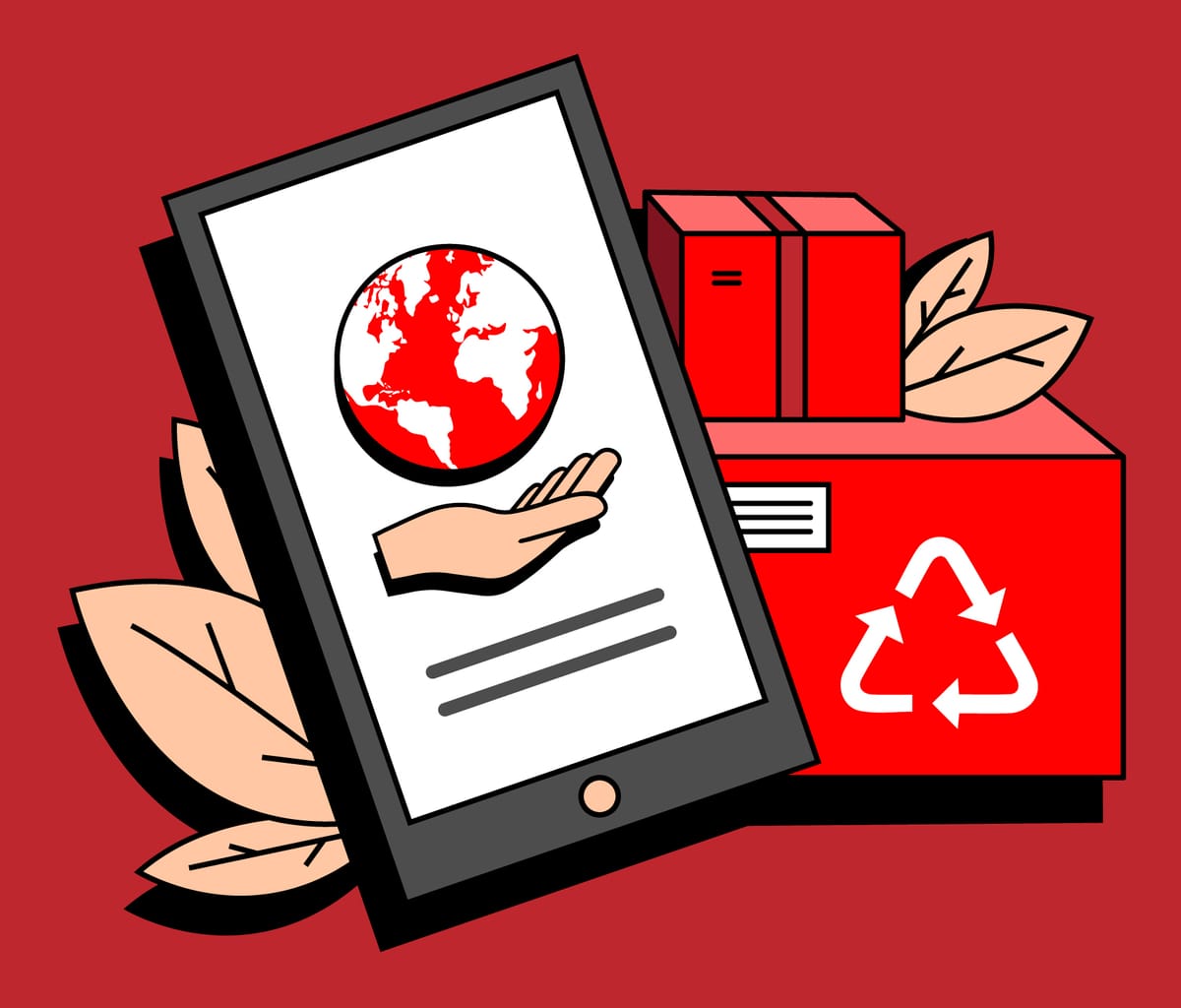In an era of conscientious consumers, many brands are realizing it's critical to embrace sustainability. This means more than "going green" — companies are feeling the pressure to be socially and ethically responsible as well. This comprehensive approach is sometimes called ESG, which is short for "Environmental, Social, and Governance."
Sustainability practices apply to more than products, too. It's important to be eco-friendly and socially conscious in one's marketing and operations as well.
Doing so is good for the planet and, often, a company's reputation and bottom line as well.
Here's how sustainability is infusing the world of marketing — and how you can put it to use for your brand.
Eco-Friendly Packaging
If you have physical products, your packaging design is vital to your brand recognition. But today's consumers are concerned about more than looks. According to a McKinsey & Company report, about 55 percent of U.S. consumers surveyed were worried about packaging's environmental impact. They weren't necessarily more likely to buy products in recycled packaging, but they definitely took note of them.
Thus, investing in eco-friendly packaging may give your brand a competitive edge. It also shows your commitment to sustainability, which could increase your brand reputation.
Plus, "green" packaging could lower your costs. In general, the less packaging, the less expensive. Consider ways you can safely and attractively package your product in an Earth-friendly way.
You can also tap into consumers' do-gooder sensibilities by encouraging them to recycle the packaging or dispose of it responsibly.
Carbon Footprint Reduction
Running any sort of business creates greenhouse gas emissions. The question is, can you reduce yours? And how can you share that mission with your employees and customers?
Everything takes energy — from manufacturing to distribution and shipping to your warehouses and offices. You can reduce your footprint (and sometimes, your operating costs) by optimizing each link in the supply chain. For example, better fleet management can lower your fuel usage. Solar panels can make your facility more environmentally friendly.
Your customers appreciate these efforts even if they don't see them. Deloitte found that consumers value reduced-waste manufacturing and ethical working practices — right up there with eco-friendly packaging.
Try sharing your carbon-reduction initiatives in your marketing campaigns. It could attract more loyal customers for your brand.
What about your marketing itself?
Marketing may not seem to have a large carbon footprint, but once you count all the computer power, paper and printing, and mailing, it does add up! Indeed, the marketing department is a great place to start embracing sustainability:
- Use recycled paper for direct mailers, brochures, and other print collateral.
- Invest in eco-friendly ink or choose a printer that uses it.
- Allow employees to work remotely or in spaces with lower energy costs.
- Avoid printing when unnecessary — use digital proofs.
Employee and Community Engagement
Marketing isn't just external. How do your employees and stakeholders perceive your brand? Are you supporting their goals for sustainability practices?
Consider how you can implement sustainability in the workplace:
- Onsite recycling and energy reduction activities
- Energy-efficiency upgrades to the workplace
- Embracing remote or hybrid working arrangements to decrease energy or fuel usage
- Encouraging employees to adopt eco-friendly practices
- Matching their charitable contributions
You can then highlight your commitment to sustainability by showcasing your employees' volunteerism, community involvement, or philanthropic efforts. This is great material for brand storytelling or "behind the scenes" social content. Many consumers would rather support brands with sustainable practices. For example, retail companies with ESG claims experienced higher growth than those without.
Cause Marketing
Brands can align themselves with environmental and social causes, such as by donating a portion of their profits to charity or promoting specific social or environmental initiatives. This is called cause marketing: campaigning on key messages that express your values. It's also a good solution for companies that don't have physical products or an energy-intensive office building.
Either way, you can enhance your brand image and resonate with socially conscious consumers. But be wary: plenty of companies have come across as insincere in their cause marketing campaigns.
For example, in 2010, KFC launched its "Buckets for a Cure" campaign. It promised to donate 50 cents for every fried chicken bucket sold to Susan G. Komen, a breast cancer awareness organization. The campaign came under fire for encouraging women to eat foods that have been linked to a higher risk of cancer (and keeping most of the sales from said buckets). Meanwhile, Susan G. Komen was losing its Charity Navigator stars due to an apparent focus on profit rather than change-making. The partnership ended up creating bad press for both Komen and KFC.
By contrast, Walgreens has enjoyed year-after-year success by partnering with Red Nose Day USA. The organization strives to eliminate child poverty, and it aligns perfectly with Walgreens' values of healthy living and family support. Walgreens donates all proceeds to the organization yet still benefits from the annual social media buzz and community activities.
If you'd like to use cause marketing to show your commitment to sustainability, be sure to:
- Partner with a reputable charitable organization
- Make sure you're aligning on key values
- Focus on the benefits to the community rather than any monetary benefits.
Ethical Sourcing and Fair Trade
Environmental and community health go hand-in-hand. In an increasingly global landscape, there's a greater risk of sourcing materials and labor unethically — even if you don't mean to. This is especially a problem in marketing as many companies outsource their tasks to offshore companies. Some don't even realize that these affordable workers are being underpaid, overworked, or both.
By following ethical sourcing practices, such as fair trade partnerships, you can ensure that their products are produced under humane, environmentally responsible conditions. This is especially important in the food and fashion industries.
You can also look into "nearshore" outsourcing, which connects companies with international workforces a bit closer to home. This can reduce the risk of pay inequity, as well as cultural or time-zone rifts.
Integrating sustainability principles into your business at every level, including your marketing department. And don't forget to showcase your efforts in your marketing campaigns!
This can help you appeal to conscientious consumers. However, make sure you're sincere in your efforts. Consumers can easily spot opportunistic campaigns such as "Buckets for a Cause." Avoid "greenwashing" and instead, demonstrate your genuine commitment to sustainability.
In today's highly saturated markets, you might gain a competitive edge and build greater loyalty. Most importantly, you'll benefit the global economy and society — and of course, our planet.


